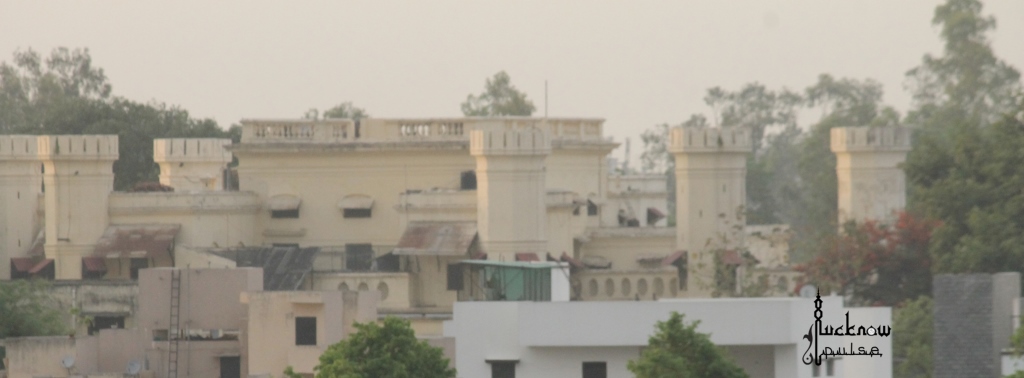The historical monuments of a city convey a lot about its past rulers and their favorite architectural patterns. The uniqueness of the monuments built in Lucknow under the reign of the Nawabs is that most of them integrated the use of lakhauri (flat bricks), urad chana dal (pulses) and chunam (lime mortar) in the construction of these magnificent monuments. All these materials were used to strengthen the base and body of the monuments that have earned Lucknow the title of “Constantinople of the East”.
Various styles of subtle architectural designs have been incorporated in the construction of monuments, towers, and mosques built during the rule of Nawabs. Mughal, Victorian, Persian, Turkish and French architectural designs were some of the preferred patterns used in the construction of monuments in Lucknow.
While the monuments built in India during the reign of Mughal emperors generally incorporated the use of marbles and stones, the Nawabs of Awadh preferred use of lakhauri, chunam and pulses to reduce the expenditure as stones and marbles were not quarried in the Province of Awadh.
One monument of great historical significance that exudes subtle mix of British and Mughal architecture located in Lucknow city is the Khursheed Manzil. The manzil presently houses the renowned La Martiniere Girls College located opposite the Moti Mahal, in Hazratganj.
History of Khursheed Manzil
The construction of Khursheed Manzil was started because Nawab Saadat Ali Khan, who was the 6th ruler of the Province of Awadh wanted to build a beautiful palace for his beloved wife Khursheed Zadi. Unfortunately, both Khursheed Zadi and Nawab Saadat Ali Khan died before the completion of Khursheed Manzil. However, their son Nawab Ghazi-ud-Din Haider later completed the work of Khursheed Manzil and named the palace after his mother Khursheed Zadi.
Actually, two beautiful monuments were dedicated to Khursheed Zadi after her death, a maqbara (mausoleum) and a palace. Both these structures were built in different architectural designs. The palace was built incorporating unique European architectural designs and the mausoleum was built integrating fine Mughal architecture. Khursheed Manzil was finally completed in 1818 by Nawab Ghazi-ud-Din Haider.
The monument was built close to Moti Mahal adjacent to Gomti River. Moti Mahal was also built by Nawab Saadat Ali Khan. Captain Duncan McLeod, who worked for the British East India Company, designed the construction and architectural outline of Khursheed Manzil. The Captain remained with the Nawabs of Awadh and canceled his employment with the British East India Company. Nawab Saadat Ali Khan employed him and offered free well-equipped accommodation and hoards of servants. The Nawab also ordered the construction of seven out-houses that were meant to be attached with the grand house of Captain Duncan McLeod.
The Khursheed Manzil also served as a mehmaan khana (guest house) during the rule of Nawab Ghazi-ud-Din Haider. The Nawab used to invite eminent dignitaries for lunch and dinner at the Khursheed Manzil. The Governor General of East India Company, Lord Moira, once visited Khursheed Manzil and got so overwhelmed that he referred the monument as the “Palace of Sun”.
Later, Tare Wali Kothi (cosmological observatory), which was built by Nawab Ghazi-ud-Din Haider was constructed adjacent to Khursheed Manzil. Captain Herbert was chosen as the principal astronomer by the Nawab for Tare Wali Kothi and Khursheed Manzil became the official house of Captain Herbert once the construction of Tare Wali Kothi started.
Khursheed Manzil also played an important role in the Uprising of 1857, when the building was occupied by the freedom fighters. The building was utilized as the main headquarter by the freedom fighters to plan their warfare tactics. Freedom fighter Ahmad-ullah Shah, who was the leader of freedom fighters used to devise military strategies from Khursheed Manzil. However, Khursheed Manzil was later recaptured by the British troops on 17th November 1857 with the help of a three-pronged military attack.
Architecture of Khursheed Manzil
Khursheed Manzil’s architecture was deeply influenced by unique European structural designs. The building clearly resembles a fortress of ancient period displaying overwhelming aura and charm. The two-storeyed building has a big central dome and eight towers. The building is accompanied with four distinctive entrances. The towers are adorned with parapets known as battlements. The building is also surrounded by a beautiful moat known as Chiraya Jheel.
Captain Duncan McLeod is also said to have taken some architectural inputs from General Claude Martin’s spectacular buildings made in Lucknow such as Farhat Bakhsh Kothi and Constantia while designing the outline of Khursheed Manzil.
Khursheed Manzil- Today
The Khursheed Manzil now houses the famous La Martiniere Girls College, one of the most prestigious colleges for girls in Lucknow. Khursheed Manzil, which was primarily built for the Begum of Nawab Saadat Ali Khan is now a full-fledged Catholic public school. The monument is maintained well by the college authorities and it still exudes that same aura of Nawabi grandeur and stateliness that is was known for in those times.


Comment here